When you think of the delicacies in South Korea, Kimchi is the first dish that pops in your head. Although you should try Korean food when in Korea, there are several Korean dishes that you must not miss out on trying anywhere in the world. Over time, Korean dishes have evolved drastically, which has led them to become a global sensation. You would notice that Korean food mainly comprises of vibrant colored veggies, rich flavored stew and an assortment of meat and seafood. The first glance at a Korean dish may make you think that it looks very modest, but the moment you taste it, you will notice that it is rich in flavor as well. Here are some of the best Korean dishes which you must try when in Korea:
Hoeddeok or Hotteok (sweet syrupy pancakes) | 호떡
Commonly referred to as Hotteok, this Korean food is just like American pancakes. Hoeddeok is popular street food in Korea and is sold at almost every food stall during the winter season. If you have a sweet tooth, you must try this delightful dish. The pancake dough is filled with delicious ingredients and then slow cooked on top of a grill. When you take a bite of this flat pancake, the flavor of beautifully blended honey, cinnamon, peanut, and brown sugar fills up your palate. This pancake is crunchy on the outside and soft on the inside, making it irresistibly tasty.
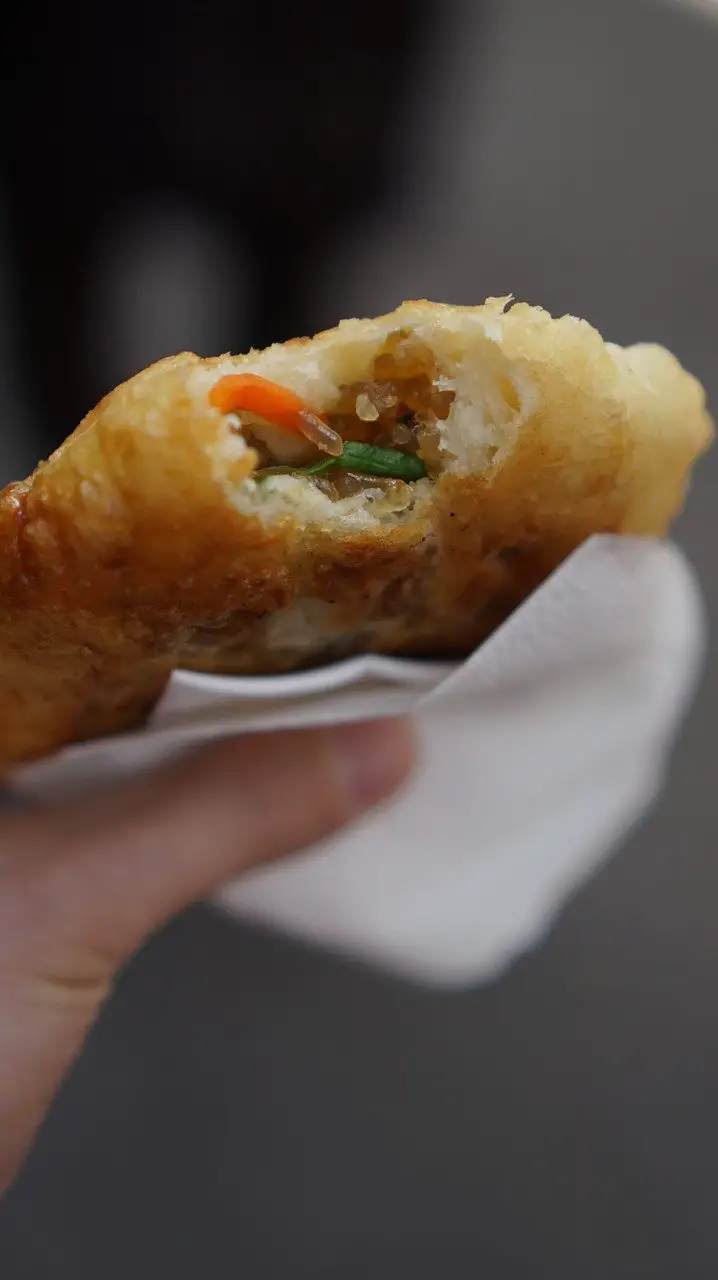
Bulgogi (marinated Korean beef barbecue) | 불고기
Another famous Korean creation, Bulgogi is a marinated beef dish that has earned massive popularity all over the world, so much so that it has earned the 23rd place in a traveler’s poll conducted by CNN in 2011. The marination of the beef before cooking this dish makes it incredibly juicy. The marinated beef is wrapped in lettuce leaves, grilled with onions and garlic and then cooked to perfection to produce the most delicious savory dish. Traditionally, you can enjoy this Korean food with a spoonful of Ssamjang, which is a spicy thick red paste.

Mandoo or Mandu (Korean dumplings) | 만두
Mandoo or Mandu is a Korean food which is prepared in almost every Korean household during the Lunar year festivities as it is said to bring good luck. Traditionally, these Korean Dumplings are dispersed in Mandu Guk, which is an anchovy broth full of flavor. It is typically served with beef broth at all the roadside stalls and Korean restaurants. Tteok Manu Guk is a cylindrical shaped rice cake which goes very well with these Korean dumplings. At Korean households, these dumplings are made up of minced beef or pork, but you will generally see them being made with assorted veggies and chicken.
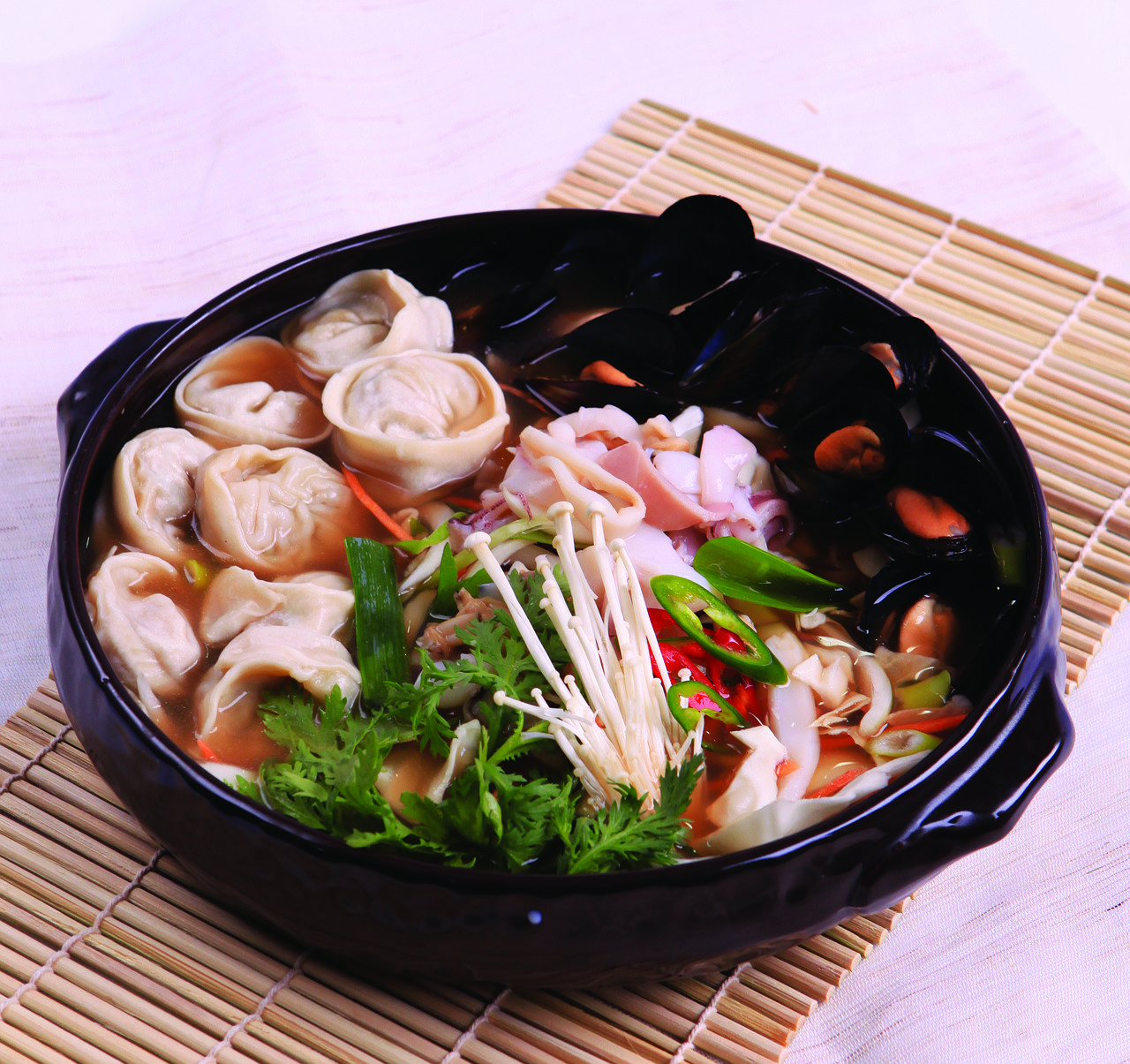
Sundubu-jjigae (soft tofu stew) | 순두부 찌가에
Sundubu-jjigae is a Korean dish named after Dubu or Tofu, which is the key ingredient in this dish. This spicy Korean stew is made by mixing tofu, mushrooms, selected veggies, beef, pork, seafood and a generous amount of Gochujang, which is a spicy red paste. This mixture is then cooked and served traditionally in a large bowl of stone. You can try out several variations of this dish, but typically it is served with a raw egg which is mixed at the time of serving.

Classic Korean Bibimbap (mixed rice) | 비빔밥
Bibimbap or the classic Korean mixed rice is a blend of several ingredients which include rice, mushrooms, beef, and an assortment of seasonal veggies, also called Namul. Gochujang or the spicy red paste is then mixed with this blend to add an extra zing to the dish. This dish is then served with a fried egg and is placed on top of the mixed rice blend. The ingredients of this dish are not limited to the ones mentioned above. Depending on the region in Korea, the ingredients of this classic Korean dish keeps changing. The most popular versions of Bibimbap are available in Tongyeong, Jeonju, and Jinju.
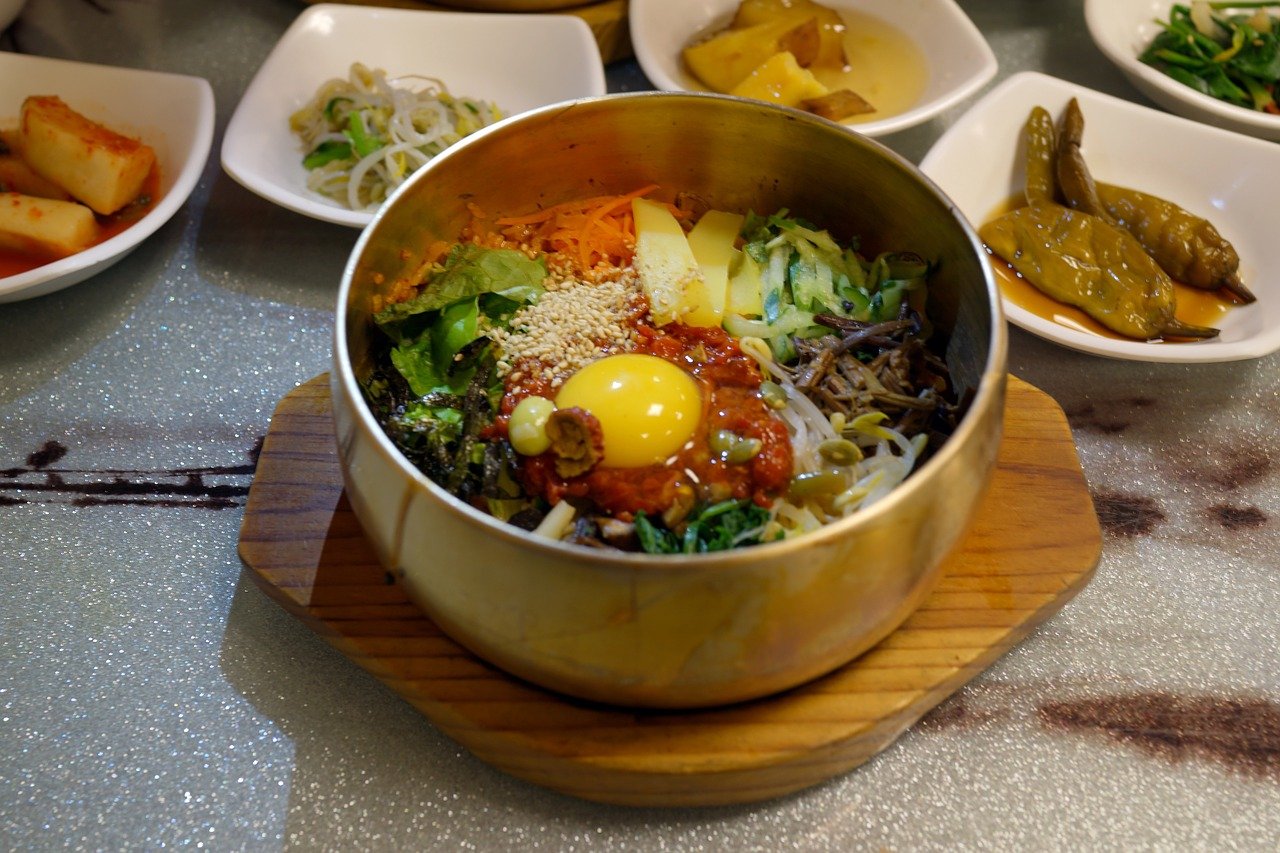
Seolleongtang (Korean Ox Bone Soup) | 선릉 탕
Seolleongtang is a Korean dish and is named so because of its origin in Seoul, Korea. This soup is made using generous quantities of ox bones, briskets and ox meat, hence the distinct flavor of the dish. You can request the restaurant or the stall to season the dish with either finely chopped onions, freshly ground black pepper, salt, minced garlic or green onion to suit your taste. This flavorsome broth looks cloudy and milky white and tastes best with a serving of rice.

Haemul Pajeon (seafood vegetable pancake) | 해물 파전
Pajeon is a popular Korean dish that has several versions, out of which the most delicious one is Haemul Pajeon. This looks like a pancake and predominantly constitutes the egg batter, green onions, rice flour, and wheat flour. The uniqueness of this dish lies in the wonderfully incorporated different types of seafood like shrimp, oysters, clams, and squid. The main dish, it is loved by the locals for the chewy and soft texture and the pronounced flavors of seafood.

Soondae (blood sausage) | 순대
Also referred to as Sundae, Soondae is a unique Korean dish that is primarily made from pig intestines. In this dish, the intestines are carefully stuffed with flavorsome ingredients like pork blood, noodles, and barley. Different provinces and cities in South Korea prepare this dish differently. The significant difference in technique that you can see in the various versions of Soondae is the filling and wrapping ingredients. Although the versions are completely different, each version of Soondae constitutes a soft and chewy interior.

Naengmyeon (cold buckwheat noodles) | 냉면
This is a ubiquitous dish in Korea which is loved by every local and visitor here. It is a cold noodle dish that comprises of long thin noodles, sliced Korean pear, cucumber bits, and minced beef and is served with a hard-boiled egg on top. Depending on the version of Naengmyeon, the noodles can be either made of potatoes, buckwheat, kudzu or arrowroot. This food is predominantly served during the summer season to combat the hot and humid climate of this region.
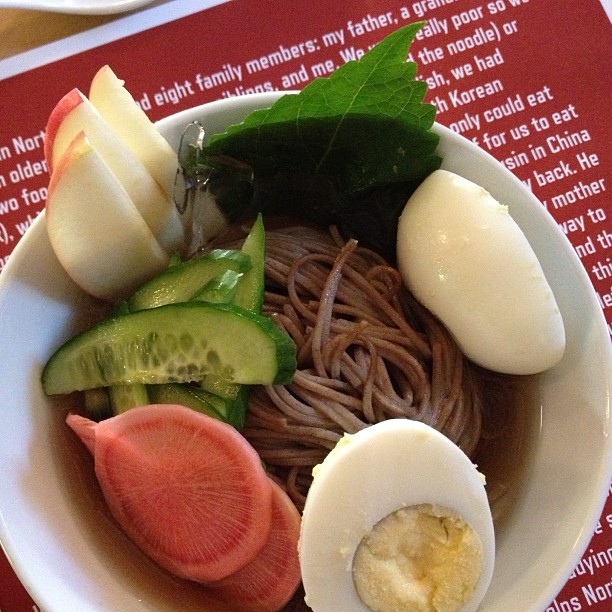
Hobakjuk (pumpkin porridge) | 호박죽
Hobakjuk is a traditional sweet porridge made in Korea using glutinous rice soaked in water and steamed pumpkins. The result is a sweet grainy porridge that is full of the goodness and the essence of pumpkins. Although this dish may seem very simple to look at, the sweetness and the tang of the pumpkin will indeed win your heart. It is a popular Korean breakfast and is generally advised to people who are not keeping well and are unable to consume a heavy diet. This dish is served both hot and cold, but it is best enjoyed when hot.

Galbi Tang (short rib soup) | 갈비 탕
This appetizing soup originated in Korea more than 800 years ago. The term “Galbi” means “Rib”. Technically, this term refers to both chicken and pork rib, but the beef rib is predominantly used in Korea for making this rich yet delicate soup. To make this dish, thick slabs of beef are first marinated in a blend of chopped garlic, sugar and soy sauce and then grilled to perfection. Due to the inclusion of beef, this Korean dish is a luxury meal in Korea and is generally served during special occasions like weddings.

Samgyetang (Korean stuffed chicken soup with Ginseng) | 삼계탕
This dish is particularly common during the summer season in Korea. Samgyetang is a traditional Korean soup that is made using garlic, chicken, scallion, rice, Korean ginseng, Korean jujube, and other spices. These ingredients are blended and cooked perfectly to give out a meaty flavor and texture. Due to the inclusion of several healthy ingredients, this soup is highly nutritious.

Samgyeopsal (pork strips) | 삼겹살
This is considered one of the most popular Korean dishes which is curated using pork belly meat. The pork belly meat is first cut into slices and then grilled over fire. The meat is neither marinated, pickled or seasoned prior to grilling and yet gives out the most unique taste you could ever imagine. Once grilled, these slices of pork belly meat are dipped in a sauce which is made by mixing pepper and salt in sesame seed oil. If you are someone who loves spices and can handle the fiery taste, you can request this dish to be served with red chili paste. After this, they are wrapped wonderfully inside lettuce leaves along with grilled onion slices, grilled garlic slices, and minced green onions. Traditionally, this dish is served with Kimchi.

Jap Chae, Chap Chae (stir-fried Korean noodles) | 잡채, 채프
This is a traditional Korean side dish that is generally served for either lunch or dinner. This Korean noodle side dish is made by stir-frying sweet potato, shredding the veggies into thin slices and adding chunks of beef. The result is then seasoned with a hint of sugar and soy sauce. Depending on the city in Korea you are trying this dish at, the chefs blend other ingredients like slices of mushrooms with the mixture. This dish tastes heavenly when an assortment of different kinds of veggies are added to the mix. This dish has a very chewy texture and is slightly sweet to eat.

Kimchi (fermented vegetables) | 김치
Kimchi is one of the oldest Korean dishes that has gained massive popularity worldwide. It is one of the essential dishes in this region and is commonly consumed in almost every Korean household. It is a sour and spicy dish that is made using fermented vegetables. There are more than 100 varieties of Kimchi served across Korea, but cabbage remains the main ingredient in every variation of this dish. Due to the unique flavor of this dish, it is pretty much the first Korean dish every foreigner tries when they visit Korea. Kimchi does not just have an exceptional flavor, it is also a low-calorie dish with high fiber and nutritional content.
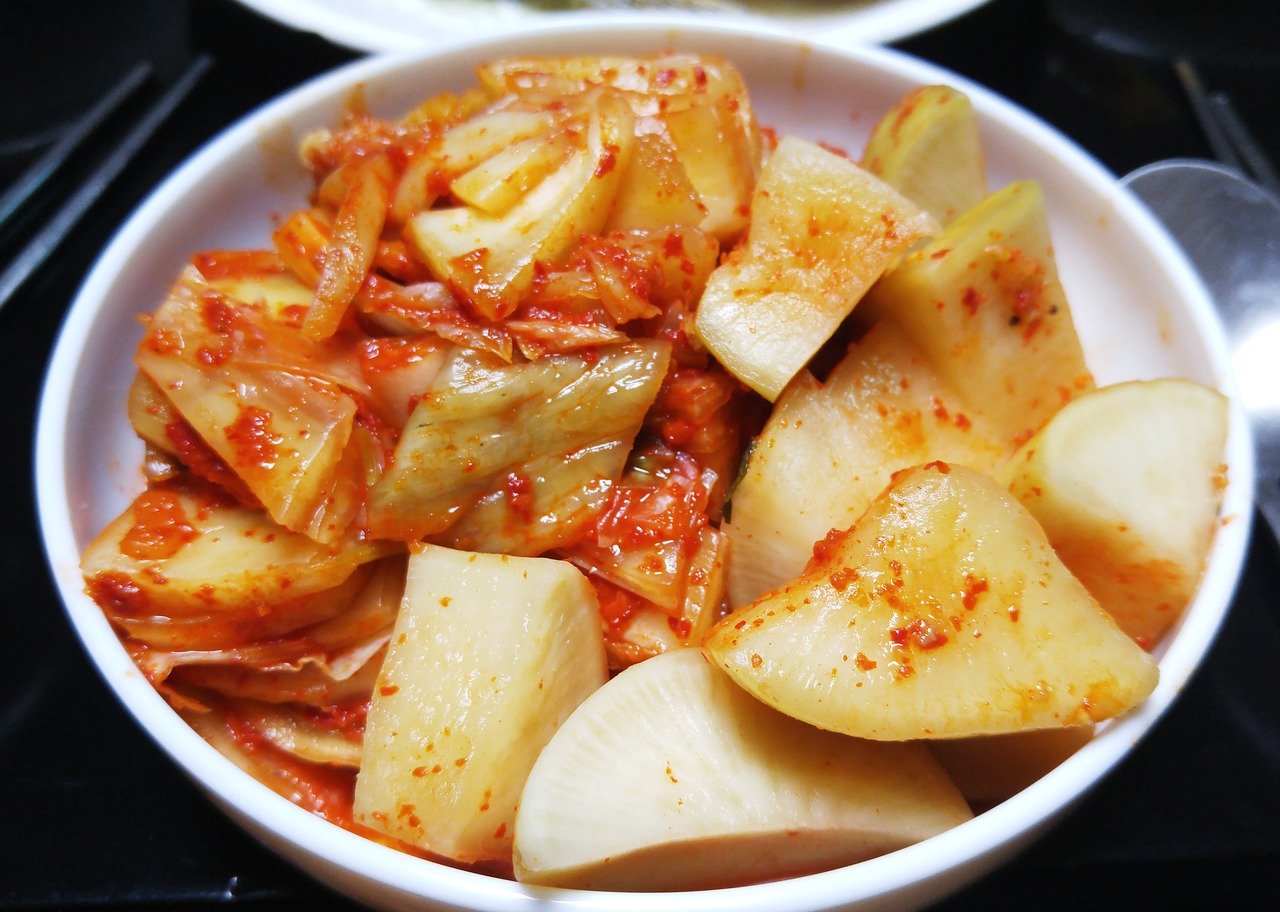
Ddukbokki (spicy rice cake) | 덕 복키
Ddukbokki or Tteokbokki, a spicy rice cake is one of the most loved spicy Korean dishes with all the essential flavors blended wonderfully. This dish is widely sold by street vendors in Korea who are known as Pojangmacha. The main ingredient is the cooked rice, to which fish, veggies and other ingredients are added. The resultant is then shaped to give a cylindrical appearance and served with a sweet red chili sauce. Ddukbokki features the perfect blend of sweet and spicy flavor with an incredibly soft and chewy texture.

Koreans take a lot of pride in their food as it is a way of representing their culture to the world outside. These Korean dishes are supremely delicious and can satisfy every food lover’s palate instantly. The next time you are in Korea, make sure you give these dishes a try.